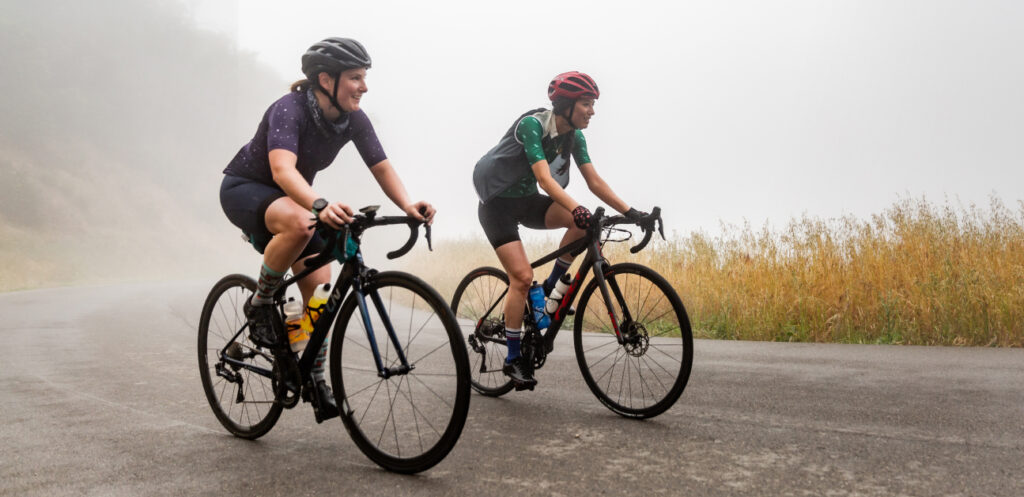Best Indoor Cycling Setup For Your Budget
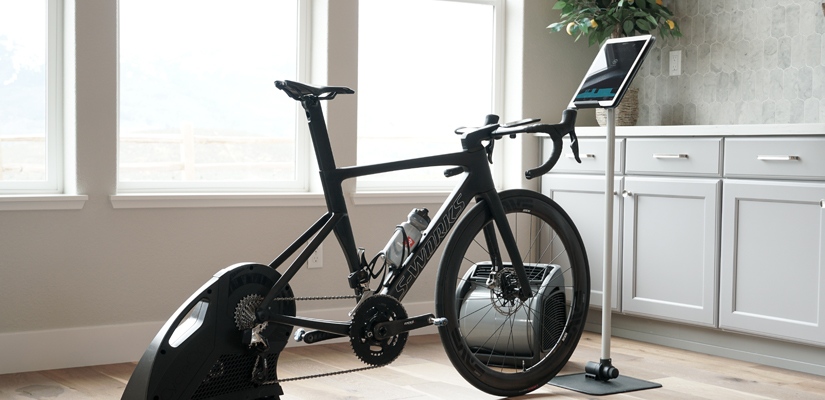
Before you begin training inside, you’ll need some specific equipment. With plenty of options to choose from, you’ll be ready to ride in no time. Here are our recommendations for your indoor cycling setup, including the best indoor bike trainers, equipment, and accessories for your budget.
Table of Contents
For more information on indoor cycling setups, check out Ask a Cycling Coach Ep 253.
Indoor Cycling Setup
Your indoor cycling space doesn’t have to be glamorous. It just needs to be functional and convenient. This will help make your training more comfortable and practical. Here are some tips for setting up your indoor training space.
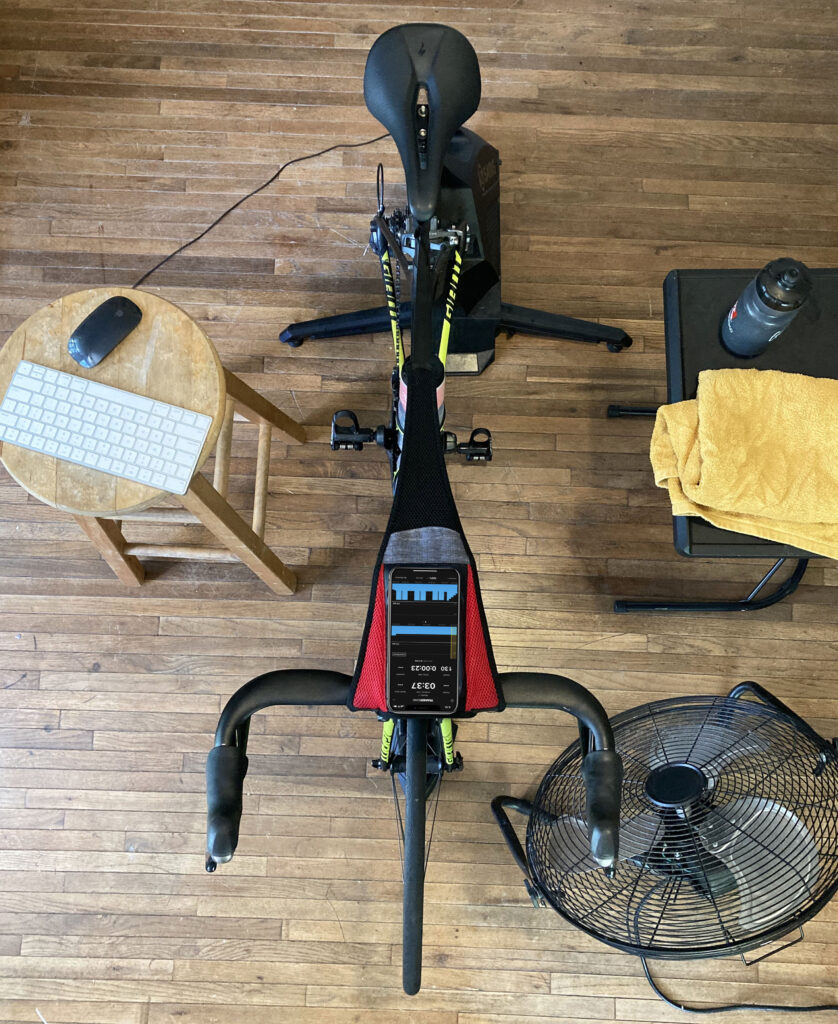
Make It Convenient
One of the most significant advantages of indoor cycling training is that it’s efficient. If possible, keep your bike on the trainer, with everything you need to get started for your next workout—bottles, nutrition, and towels. Keeping your training setup convenient will not only save you time, but also helps remove barriers keeping you from the workout.
Make It Comfortable
One of the most overlooked aspects of indoor cycling training is cooling. Even during easy endurance rides, your body produces a massive amount of heat. Overheating not only makes for a miserable time, but it seriously hampers your performance. While any fan will be better than none, we recommend getting a pivoting blower fan like this one. These types of fans provide a focused beam of fast-moving air. You can go a step further and use these remote outlets for convenience.
Make It Accessible
It can be frustrating to get off your bike in the middle of an interval because something is out of reach. Setting up a table or desk to hold your stuff is a great idea. Make it close enough so that you can easily reach it from the bike. It’s helpful to put an extra bottle, towel, and nutrition on it.
Adaptive Training
Get the right workout, every time with training that adapts to you.
Check Out TrainerRoadThere are plenty of trainers and setups you can use with TrainerRoad. The best indoor trainer for you will depend on your needs and budget. If you are just getting started with indoor training, check out our beginner’s guide for quick tips that will help you nail your workouts.
Tips for Entertainment
The right entertainment can help make your indoor workout seem a little easier. Whether it’s some music, a podcast, or your favorite TV show, entertainment provides both motivation and distraction. Try incorporating more involved entertainment options like your favorite movie or TV show during the easier aerobic workouts. Heck, even some athletes play video games during easier ones.
For those especially tough workouts having some good music can motivate you to dig deep. We’ve made some playlists on Spotify, but you can use your own! If you are going to use headphones, we recommend ones that have an IPX7 rating or higher to keep out the sweat. You can pair music with some of the great race analysis videos from our YouTube channel.
Where To Set Up Your Traininer
You can set up your trainer almost anywhere. Your training space doesn’t need to be glamorous. It only needs to be functional, safe, and convenient. Here are some things to consider for where to set up your trainer.
How Much Space Do I Need?
Before you pick a location, you want to examine how much space you’ll need. For just the bike and trainer, you’ll need an area that’s approximately six feet by four feet. Just make sure you have enough room to get on and off the bike safely. You’ll need to add more area for fans and any other accessories.
What’s the Best Room?
You’ll want to pick a spot that’s out of the way, near a power outlet, has a stable flooring surface. It’s best to avoid high-pile carpets to keep your trainer level when you’re on the bike. Finally, you want your space to be well ventilated. Even a small window can go a long way to provide some fresh air.
Find What Works for You
So putting it all together, the best room to set up your training is one that has enough space, a power supply, and some ventilation. At TrainerRoad, we’ve seen thousands of training spaces. Some are in a bedroom, some in a basement, while others are in the garage. Feel free to experiment, adjust, and fine-tune. The most important thing is that it works well for you.
The Best Indoor Bike Trainer
Before you start training indoors, there’s some equipment that you will need and some items that will help maximize your hard work. At the very least, you need a bike, trainer, sensor, and a device to run the TrainerRoad app. The choices for a trainer and sensor will depend on how much you want to spend, but the good news is that there are plenty of options. The best indoor bike trainer is one that meets your needs and your budget.
Benefits of a Smart Trainer
By far our favorite type of indoor training setup includes a smart trainer. No doubt about it, these trainers are the most expensive option. However, smart bike trainers offer plenty of benefits—power, cadence, and automatic resistance control. Using both Bluetooth and ANT+, smart trainers measure your power output and automatically control the resistance based on your cadence. That way, don’t have to worry about shifting to hit your power target. All you have to do is pedal.
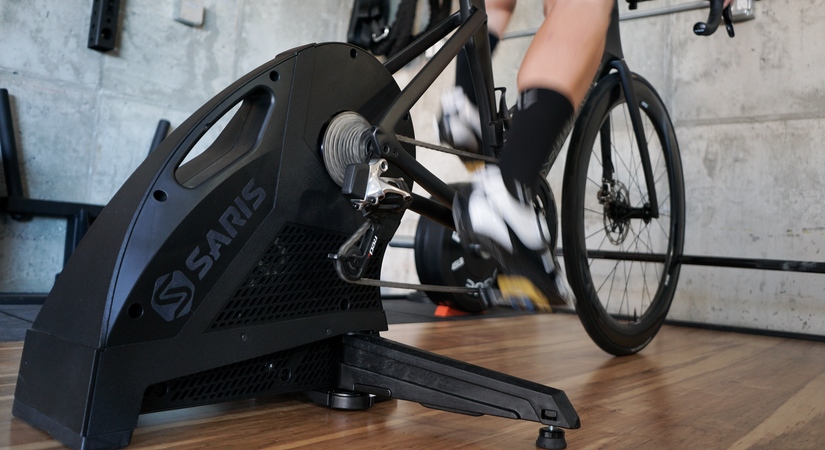
The smart trainers are direct drive, meaning you remove the rear wheel from your bike. Direct drives are nearly silent. We say nearly because you’ll still hear noise from your drivetrain. Additionally, you won’t have to worry about the rear tire slipping or wearing out. It’s helpful to get an extra cassette so you won’t have to swap it back and forth between your wheel and trainer. As always, it’s a good idea to first check with the manufacturer to make sure your bike is compatible.
High Budget Indoor Trainers
Pros
- Automatic resistance control
- Includes power measurement
- Nearly silent
- Wirelessly connects to your devices
Cons
- Most expensive option
- Requires a power supply
- Requires removal of rear wheel
Here are some of our picks for the best indoor bike trainers. Each one is a direct drive smart trainer that can connect via Bluetooth. One of the favorites among TrainerRoad employees is the Saris H3. Its massive flywheel offers a great feeling ride and adjustable feet allow it to sit level on an uneven floor. Another great option is the Tacx Neo 2T. One of the cooler features is that it doesn’t require calibration. Finally, the Elite Direto XR is a good choice if you’re not mechanically inclined. It comes with a pre-installed 11-speed cassette and is ready to go right out of the box.
Best Budget Bike Trainer
Even though a smart trainer is nice to have, you can still get an effective training experience with a budget bike trainer. The lowest cost indoor cycling setup is to use VirtualPower with a trainer and a speed sensor. VirtualPower automatically turns your speed sensor data into power data. That way, you can get the benefits of power-based training without the cost of a power meter or a smart trainer.
It supports nearly every trainer on the market. Check out our equipment checker for more details.
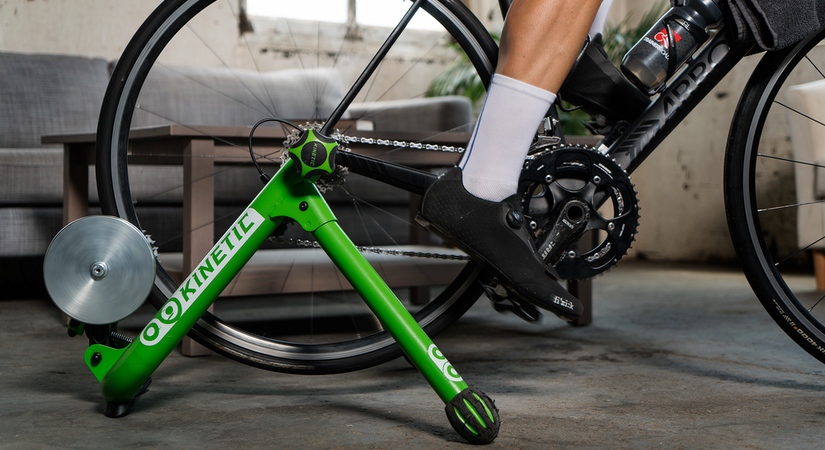
Two of the best indoor cycling trainers are the Kurt Kinetic Road Machine and the Cycleops Jet Fluid Pro. Both are solidly built, last a long time, and are easy to set up. However, these budget bike trainers aren’t being produced anymore, so you’ll need to find them on a secondary market. Kinetic Road Machine Smart 2 is another great choice. For $300 (US), you get a wheel-on trainer with power data that connects via Bluetooth.
If space is an issue or you want something that can travel with you, we recommend the Feedback Sports Omnium Over-Drive. Essentially, it’s a small set of rollers for the rear wheel, where you’ll remove the front wheel and insert it into an adaptable fork mount. While you need need a Bluetooth speed sensor for the rear wheel to use VirtualPower, the Omnium Over-Drive makes up for it in weight and space savings. If you need a speed sensor, our pick is the Garmin Speed Sensor 2.
Budget Indoor Trainers
Pros
- Least expensive option
- Doesn’t require power supply
- Easy to set up
Cons
- Causes rapid rear tire wear
- Requires speed sensor or power meter
- Tend to be loud
Using a Power Meter with your Indoor Bike Trainer
One piece of equipment advice we frequently offer is to invest in a power meter. Training with a power meter allows you to accurately measure your performance both indoors and out. This is a lower-priced indoor cycling setup option if you already have a trainer. Buying both a trainer and power meter will cost more, but the versatility allows you to take your training outdoors with Outside Workouts.
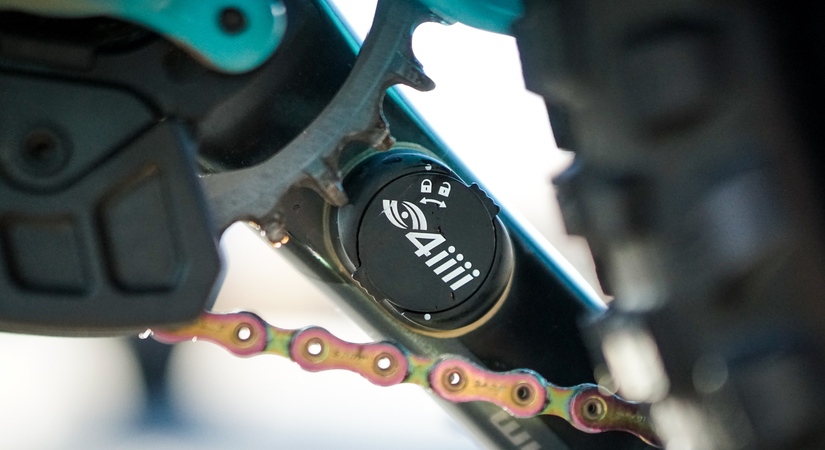
Power meters have dropped in price over the past few years, especially in regards to single-sided ones. Both the Stages Gen 3 Power Meter and 4iiii Precision Power Meter offer fantastic value. These power meters are single-sided and installed on the non-drive side crank arm. They can also be added to your existing crank. Just make sure it will clear the chainstays on your bike. You can check with the manufacturer for frame compatibility information. If you want to swap your power meter between bikes, pedal-based power meters are an easy solution. We like the Assioma Uno and the Garmin Rally Series.
Five Indoor Training Tips
- 3-4 hours before your workout, eat high-quality carbohydrates to fuel up.
- Use a good fan, and position it to cover the maximum surface area of your body.
- Set up some entertainment in the form of music or videos.
- Drink up! Aim for at least one bottle an hour.
- Fuel during the workout. This can be as simple as eating a gel or drinking a sports mix.
Indoor Training Accessories and Equipment
There are plenty of indoor training accessories. You’ll want to make sure to budget for some accessories that can improve your indoor training experience. Since you don’t get a breeze during an indoor workout, a good fan and a few gym towels go a long way in keeping sweat off your bike. Here are some of our favorites for every budget option that will make your training more enjoyable.
Low-Cost Accessories
You’ll for sure wants some towels—the more the better. You can drape a couple over the handlebars and keep a few with arm’s reach to wipe off. Not only will you be able to protect your bike, but make you a bit more comfortable. Speaking of comfort, to keep you from having to stop and turn the fans on, remote power outlets can be a simple, yet effective upgrade. Finally, a cheap way to mount your phone to the bike is to use a phone adapter. This one sticks on the back of your phone case for a secure fit.
Mid-Level Accessories
Even with towels and a fan, sweat can still make its way to the floor. It helps to have a mat, like this one, underneath the trainer. Additionally, they can help cut down on noise. We already mentioned fans in this article, but aside from the bike and trainer, fans are the most important part of your indoor cycling setup. The Lasko Pro-Performance Fan is a fantastic one. Many of our athletes get more than one to have maximum airflow.
High-End Accessories
These aren’t absolute necessities but can make your training more enjoyable. The RAD Trainer Desk is large enough to hold a tablet or laptop and fan at the same time. It’s adjustable and even includes slots for bottles. Wearing earbuds on the trainer can help keep the noise down, so you can hear your entertainment. Our favorites are the Jaybird X4 and the Apple Airpods Pro.
For more cycling training knowledge, listen to Ask a Cycling Coach — the only podcast dedicated to making you a faster cyclist. New episodes are released weekly.
